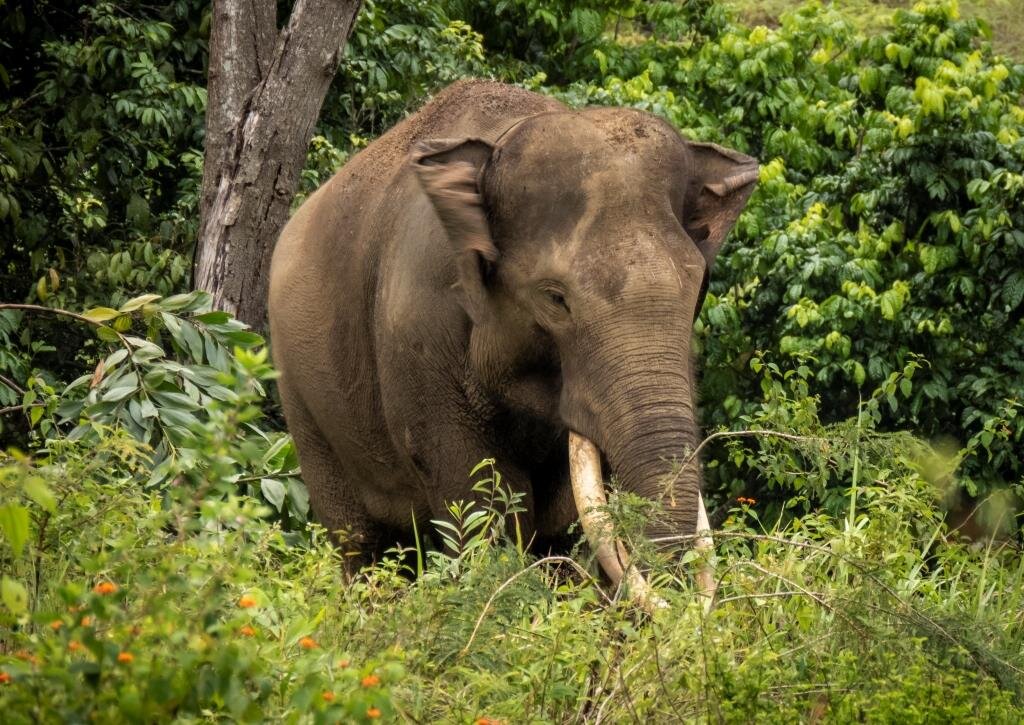
Important Elephant Organisations and Published Research
Elephant Conservation Organisations
We support other elephant organisations/conservation/research who’s efforts greatly contribute to elephant conservation in Africa and Asia, and elephant welfare. Please check out these amazing organisations!
Bring the Elephant Home, founded by Antoinette van de Water, contributes to the conservation of both African and Asian elephants. This organisation is active on 3 continents, combining research with community engagement to provide sustainable, long-lasting change and benefits to both local people and elephant populations. Please check out their website where you can donate or actively volunteer to contribute to the conservation of elephants.
ELEPHANT CARE UNCHAINED IS A NON-PROFIT ORGANIZATION DEDICATED TO ELIMINATING CRUELTY AND IMPROVING ELEPHANT WELFARE IN THEIR NATIVE COUNTRIES. Stephen Koyle has spent more than 30 years caring for animals. He has spent the last 20 years specializing in elephant care. Throughout his career Steve has travelled around the world inspiring future elephant keepers, zoo teens, animal rights activists and zoo board members. His passion and work ethic have driven him to form ELEPHANT CARE UNCHAINED. Please visit his website to support his work.
The Elephant Welfare Project has been created by Dr Lisa Yon from Nottingham Universities school of Veterinary Medicine and Science. For over a decade the team have been working in partnership with national and international elephant-keeping facilities to improve captive elephant welfare, through working in collaboration with elephant keepers, animal welfare scientists and non-governmental organisations (NGOs) based in the UK and internationally. The aim is to produce a better understanding and improving welfare of all captive elephants globally.
Published research by our team and other elephant researchers
Hankinson, E.L., Hill, R.A., Marsh, C.D. et al. Influences of Forest Structure on the Density and Habitat Preference of Two Sympatric Gibbons (Symphalangus syndactylus and Hylobates lar). Int J Primatol (2021). https://doi.org/10.1007/s10764-021-00199-2
Hankinson, E.L., Nijman, V., and Abdullah. 2020. Asian Elephants: 15 years of Research and Conservation. Journal of Physicals: Conference Series, Vol 1460, 012055. DOI: 10.1088/1742-6596/1460/1/012055
Blake, S., Deem, S.L., Mossimbo, E., Maisels, F.,Walsh, P., 2009. Forest elephants: tree planters of the Congo. Biotropica 41, 459-468.
Blake, S., Hedges, S., 2004. Sinking the flagship: the case of forest elephants in Asia and Africa. Conserv. Biol. 18, 1191-1202.
Campos-Arceiz, A., Blake, S. 2011. Mega-gardeners of the forest- the role of elephants in seed dispersal. Acta Oecologica. 37, 542-553.
Fernando, P., Kumar, M.A., Williams, A.C., Wikramanayake, E., Aziz, T., Singh, S.M. 2008. Review of human-elephant conflict mitigation measures practised in South Asia. World bank, WWF.
Gunaryadi, D, Sugiyo, Hedges, S. 2017. Community-based human elephant conflict mitigation: The value of an evidence-based approach in promoting the uptake of effective methods. PLoS ONE. 12(5), e0173742.
Hedges S., Tyson M.J., Sitompul A.F., Kinnaird M.F., Gunaryadi D., and Aslan. 2005. Distribution, status, and conservation of Asian elephants (Elephas maximus) in Lampung Province, Sumatra, Indonesia. Biological Conservation 124, 35-48.
Nijman, V and Sheperd, C.R. 2014. Emergence of Mong La on the Myanmar–China border as a global hub for the international trade in ivory and elephant parts. Biological Conervation. 179, 17-22.
Rood, E, Ganie, A.A, Nijman, V. 2010. Using presence-only modelling to predict Asian elephant habitat use in a tropical forest landscape: implications for conservation. Diversity and Distributions. 16, 975-984.
Moβbrucker A. M., Apriyana, I., Fickel, J., Imron, M.A., Pudyatmoko, S., Sumardi, Suryadi, H. 2015. Non-invasive genotyping of Sumatran elephant: implications for conservation. Tropical Conservation Science. 8 (3), 745-759.
Yon, L., William, E., Harvey, N.D., and Asher, L. 2019. Development of a behavioural welfare assessment tool for routine use with captive elephants. PLoS ONE. 14(2), e0210783.
Andrea Molyneaux, Emma Hankinson, Mbra Kaban, Magdalena S Svensson, Susan M. Cheyne, Vincent Nijman. 2021. Primate selfies and anthropozoonotic diseases: lack of rule compliance and poor risk perception threatens orangutans. Folia Primatologica in press.
Ellesse Janda, Emma Hankinson, David Walker & Stefano Vaglio. 2018. Scent-marking behaviour signals sex, female rank and age in captive red-ruffed lemurs. American Journal of Primatology, 81 (1), 60-68.
Cici Alexander, Amanda Korstjens, Emma Hankinson, Graham Usher, Nathan Harrios, Matthew Nowak, Abdullah Abdullah, Serge A. Wich & Ross Hill. 2018. Locating emergent trees in a tropical rainforest using data from an Unmaned Aerial Vehicle (UAV). International Journal of Applied Earth Observation and Geoinformation. 72, 86-90.
Amanda H. Korstjens, Emma Hankinson, Helen Slater. 2018. Predicting African primate species’ responses to climate change. In: Primatology, Biocultural Diversity and Sustainable Development in Tropical Forests. UNESCO, 186-204.
Zeno Wijtten, Emma Hankinson, Timothy Pellissier, Matthew Nuttall & Richard Lemarkat. 2012. Activity Budgets of Peters’ Angola Black-and-white Colobus (Colobus angolensis palliatus) in an East African Coastal Forest. African Primates, 7 (2), 203-210.
Van de Water, A., King, L. E., Arkajak, R., Arkajak, J., Doormaal, N. van, Ceccarelli, V., Sluiter, L., Doornwaard, S. M., Praet, V., Owen, D., & Matteson, K. (2020). Beehive fences as a sustainable local solution to human-elephant conflict in Thailand. Conservation Science and Practice, e260.
Van de Water, A., Henley, M., Bates, L., & Slotow, R. (2020). Future of Thailand’s captive elephants. Animal Sentience, 5(28).
Van de Water, A. & Matteson, K. (2018). Human-elephant conflict in western Thailand: Socio-economic drivers and potential mitigation strategies. PloS one 13, e0194736.
Van de Water, A. & Nilubol, D. (2013). Restoring habitat for the Bornean elephant. Natural History Bulletin of the Siam Society 59(1): 1–4, 2013.
COVID-19 and safe jungle trekking
The Sumatran Orangutan is Critically Endangered, with wild populations loosing their rainforest home at a catastrophic rate. We understand that people would love to see these amazing red Apes in the wild, but do you also realise that your visit could be putting this apes survival under threat? Great Apes, due to their genetic closeness to humans are susceptible to or illnesses and viruses, which can be devastating to a population. This means you SHOULD NOT GET CLOSE, DO NOT FEED AND DO NOT TOUCH WILD ORANGUTANS. The following link provides guidelines on how YOU can protect these apes during your visit.
https://www.greenhillbukitlawang.com/covid19-and-safe-trekking



